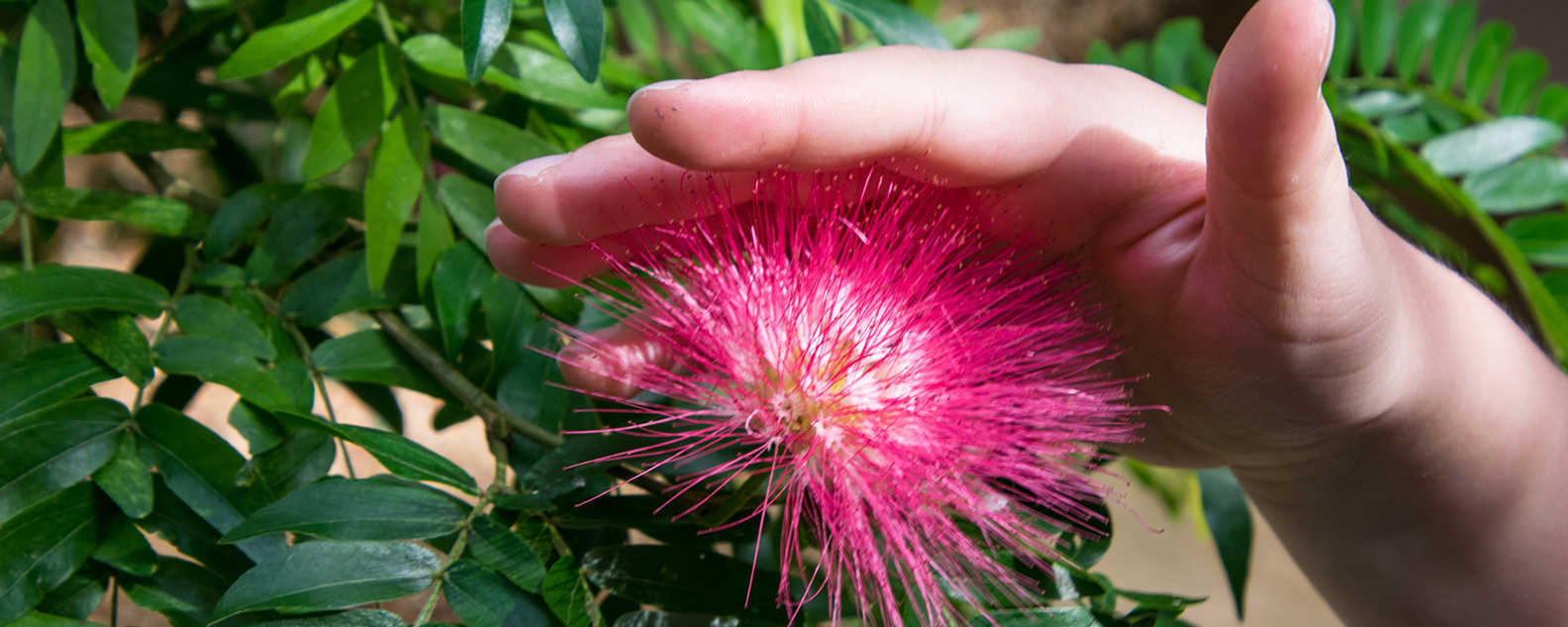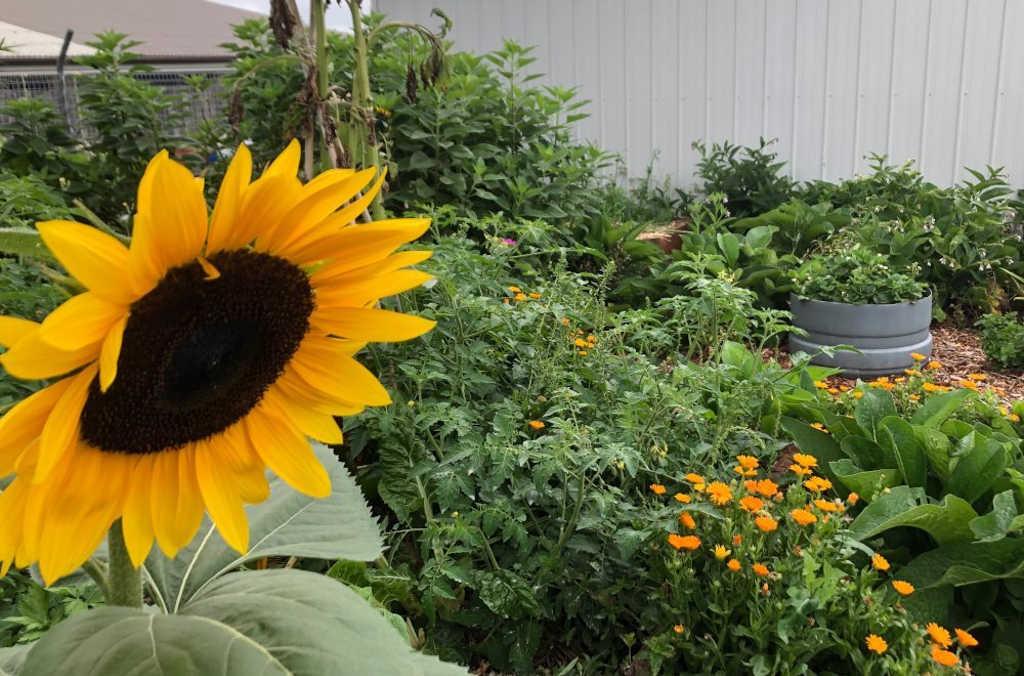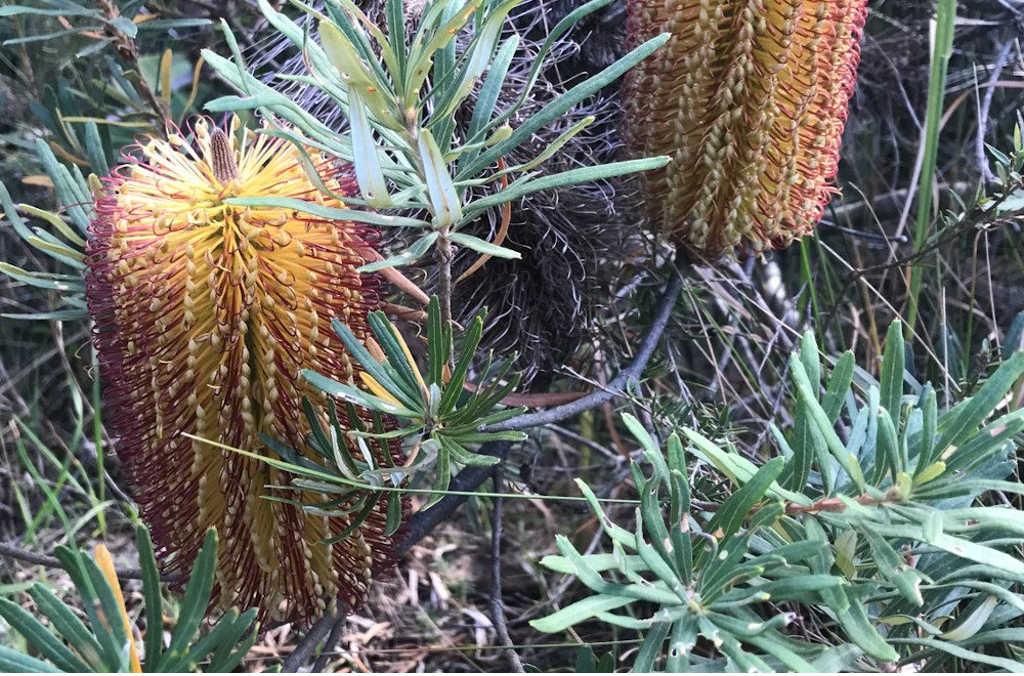Design your own Sensory Garden
Sensory gardens are designed to stimulate the senses with a variety of aromas, textures, colours and shapes.

Plants and other aspects of the garden are used to provide experiences for the senses. Sight, sound, smell, touch and taste are all engaged. Sensory triggers less commonly thought about are also important - such as gravity, temperature, space and enclosure.
Sensory gardens are an exciting place, for both kids and adults, to connect with nature, as we are invited to touch, smell and taste the plants.

Sunflower - The flower's bright yellow colour, and its size, make it visually 'pop' in the garden - a sensory feast for the eyes! 
Banksia flowers - Banksias make a great addition to a sensory garden. Gently touch their flowers for an interesting, soft-but-bumpy texture. Colourful objects - As well as plants, adding colourfull objects to your garden stimulates the senses and adds some fun. Sensory signage - Sensory signage at a school in Broken Hill invites the students to interact with the plants.
Design a Sensory Garden
Sensory gardens are a combination of hardscape elements and plants that combine to provide colour, smells, textures, sounds and tastes that awaken the senses and relax the mind.
Components of a Sensory Garden:
Hardscape Components: The hardscape components are the non-living components of the garden. The paths, benches, containers, decking, mulch, walls etc. These aspects also provide opportunities to include colour and texture. Path surfaces can vary throughout the garden, but consideration needs to be given to who will be using the garden and if it needs to be wheelchair-friendly.
Signage is an important aspect of a sensory garden. Users will be more inclined to interact with the space and the plants if they are invited to do so. This can be achieved by a map or by individual signs. Try coding signs using colours or symbols to highlight the different senses associated with each plant or area.
Plant Selection: As is the case with any garden, consideration must go into the selected site and its conditions. As users of the space are encouraged to interact with the plants, avoid plants that are poisonous, allergenic, or are likely to require pesticides.
Stimulating the Senses
Sight: To create visual stimulation in your garden, include different colours, varying textures and forms, and areas of light and shade. Remember - it’s not just about the flowers! Bark and foliage can have vibrant colours and textures. You can also add a variety of non-living colourful and fun items to your garden.
Sound: Wind can create a variety of sounds in many plants - like bamboo stems knocking together, grasses rustling etc. Dried leaves can be walked upon for a satisfying 'crunch', and sounds of animals attracted to the garden can fill the air. You could also add elements like wind chimes and running water.
Taste: There are lots of ways to stimulate tastebuds in a sensory garden. You could use numerous plants such as fruit, vegetables and herbs, many of which are also colourful and aromatic. Some great examples for your garden are various lettuces, kales, cherry tomatoes, strawberries and lilly pillies.
Texture: Plant textures are not limited to just rough and smooth, they can have a whole variety of interesting textures. Remember bark as well as the leaves and flowers! Examples of different plants to feel in the garden are lambs ears, banksia flowers, rough-barked eucalyptus tree and paperbarks, succulents, ferns and mosses.
Smell: Smells come from a variety of sources in the garden, not just the flowers. In the case of many culinary herbs the foliage is fragrant, and mulch and soil have a distinct smell. Examples of plants with interesting scents are thyme, oregano, mint species, lavender, rosemary, lemon balm, jasmine, geraniums, gardenias, boronias and prostantheras.